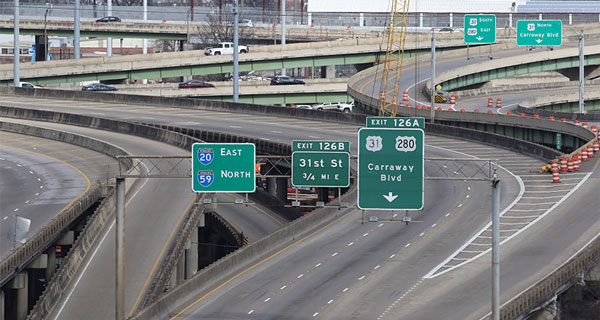National Work Zone Awareness Week
April 8 -12, 2019
Drive Like You Work Here

Since 2000, the Federal Highway Administration (FHWA) and its partners have sponsored National Work Zone Awareness Week, an annual spring campaign held at the start of construction season to encourage safe driving through highway work zones.
Work zones play a key role in maintaining and upgrading our roadways. Unfortunately, daily changes in traffic patterns, narrowed rights-of-way, and other construction activities often create a combination of factors resulting in crashes, injuries, and fatalities. These crashes also cause excessive delays, especially given the constrained driving environment.
Each year, National Work Zone Awareness Week brings attention to these safety, mobility, and constructability issues. The key message is that, as a driver, you must use extra caution in work zones to keep yourself and others safe. In short: Drive like you work here.
Safety Tips for Driving in Work Zones
- Plan ahead. Work zones account for an estimated 10 percent of overall congestion and nearly 24 percent of unexpected freeway delays. Expect delays, plan for them, and leave early to reach your destination on time. When you can, avoid work zones altogether by using alternate routes.
- Obey road crews and signs. When approaching a work zone, watch for cones, barrels, signs, large vehicles, or workers in bright-colored vests to warn you and direct you where to go.
- Slow down. Look for signs indicating the speed limit through the work zone. Keep a safe distance from the vehicle ahead of you and follow the posted speed limit. Fines for speeding DOUBLE in work zones when construction workers are present.
- Move over. Most state move-over laws apply when passing work crews and official vehicles parked on the shoulder with flashing warning lights.
- Avoid distractions. Keep your eyes on the road and off your phone.
- Watch for sudden stoppages. In 2017, 25 percent of fatal work zone crashes involved rear-end collisions.
- Watch for large vehicles. Don’t make sudden lane changes in front of trucks that are trying to slow down. In 2017, 50 percent of fatal work zone crashes involving large trucks or buses occurred on rural roadways. Between 2013 and 2017, fatal work zone crashes involving large trucks increased by 43 percent.
Drivers need to be particularly alert traveling through highway work zones. When a road is not in its usual condition due to construction, it is a good idea to slow down. Most work zone crashes are rear-end collisions resulting from speeding or inattentive driving.
- Four out of five fatalities in work zones are drivers and passengers
- The greater danger is not just to workers but to the traveling public
Remember that Work Zone Safety is Everybody’s Responsibility. Don’t become a statistic!

ALDOT’s mission is to provide a safe, efficient, environmentally sound transportation network across Alabama. For traffic alerts and updates, please visit www.5920bridge.com, utilize the ALGO traffic app, and follow us on Facebook, Instagram, and Twitter.



